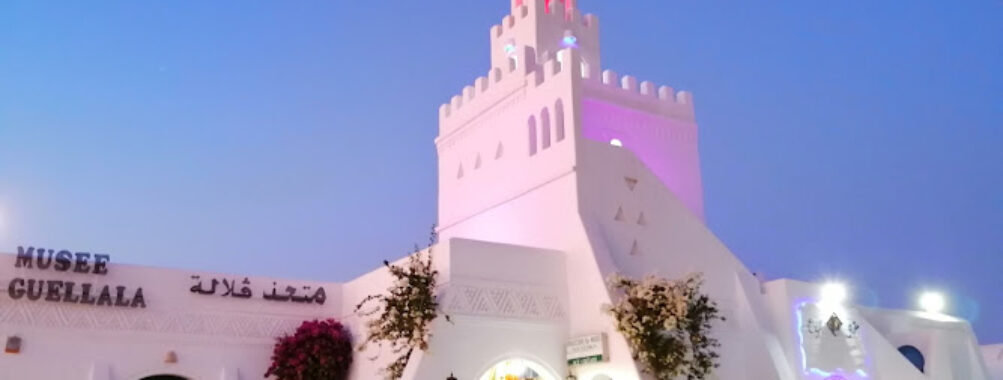
Guellala Museum
“`html
Table of Contents
Description
The Guellala Museum on Djerba Island is one of those places that quietly sneaks up on travelers. At first glance, it might look like just another cultural stop, but once inside, it opens up into a layered journey through Tunisian traditions, crafts, and everyday life. The museum is perched on a hilltop, and that alone is worth mentioning because the panoramic views across the island are absolutely breathtaking. You can stand there for a while, just letting the breeze roll in, and suddenly the whole visit feels more like an experience than a simple sightseeing stop.
What makes this museum stand out is its ability to blend education with atmosphere. There are rooms that recreate traditional Tunisian homes, complete with furniture, pottery, and clothing. You can almost feel the presence of families who might have lived that way generations ago. And then there are the pottery displays—after all, Guellala is famous as one of Tunisia’s pottery capitals. The exhibits are rich and varied, ranging from delicate ceramics to bold, earthy designs that reflect the Berber heritage of the island.
Now, not everyone walks away with the same impression. Some visitors are blown away by the scale and detail, while others feel it could use a little more polish in certain areas. That’s fair, because a few corners of the museum might feel slightly dated. But honestly, that’s part of its charm. It doesn’t try to be flashy or overly modern; instead, it stays true to the roots of the culture it represents. If you’re the kind of traveler who values authenticity over gloss, this place will resonate with you.
The museum is also quite practical for families and groups. It’s accessible, with wheelchair-friendly entrances and restrooms, and there’s even a restaurant on-site for when you need a break. The staff tend to be welcoming, and while not everyone speaks fluent English, smiles and gestures go a long way here. Kids usually enjoy the more interactive displays, especially the life-size reconstructions of traditional scenes. It’s not a “quiet, don’t-touch-anything” kind of museum—it feels lived-in, approachable, and human.
Key Features
- Extensive collection of traditional pottery from Guellala, one of Tunisia’s pottery hubs
- Life-size reconstructions of Tunisian daily life, from weddings to family gatherings
- Panoramic views of Djerba Island from the museum’s hilltop location
- Exhibits highlighting Berber traditions and local craftsmanship
- Wheelchair-accessible facilities, including parking and restrooms
- On-site restaurant and restrooms for visitor convenience
- Family-friendly environment with displays that engage children
- Free parking available for those arriving by car
Best Time to Visit
If you’re planning a stop at the Guellala Museum, timing can make a big difference. The cooler months—from October through April—are ideal, especially if you want to enjoy the outdoor views without the summer heat pressing down on you. Midday in July or August can feel like stepping into an oven, and while the museum is indoors, the heat still lingers. Early mornings or late afternoons are also great times, not just for comfort but for the softer light that makes the hilltop views extra magical.
Personally, I loved visiting in spring. The air was fresh, the island felt alive, and walking around the exhibits didn’t feel rushed. If you’re into photography, sunset visits are worth considering—the museum’s elevated position gives you a front-row seat to some spectacular colors in the sky.
How to Get There
Reaching the Guellala Museum is fairly straightforward. It’s located in the village of Guellala, which is known across Tunisia for its pottery-making traditions. If you’re staying in Houmt Souk, the island’s main town, you can grab a taxi that gets you there in about 15–20 minutes. The ride isn’t expensive, and drivers are usually familiar with the museum since it’s a well-known attraction.
For budget travelers, local buses and shared taxis (called louages) are also an option, though they might drop you off at the main road, leaving a short walk uphill to the museum entrance. If you’ve rented a car, you’ll be glad to know there’s free parking on-site, which makes things much easier. Just be prepared for some narrow village roads on the way—it’s all part of the adventure.
Tips for Visiting
A few practical tips can make your visit smoother and more enjoyable. First, bring a bottle of water, especially if you’re visiting in warmer months. The museum does have a restaurant, but you’ll appreciate having something handy as you wander around. Second, give yourself at least an hour and a half to explore. Rushing through would mean missing the little details that make this place special, like the embroidery on traditional wedding costumes or the subtle differences in pottery styles.
Photography is generally allowed, and the lighting inside is decent, but if you’re serious about capturing the exhibits, a camera with good low-light performance will help. Also, don’t skip the outdoor terrace—it’s one of the highlights, and many visitors consider it the best spot for photos on the island.
If you’re traveling with kids, prepare them for a mix of hands-on and observational experiences. They’ll probably enjoy the camel outside (though opinions differ on that attraction), and the reconstructed life scenes tend to spark their curiosity. And finally, try to go with an open mind. Some parts of the museum might feel a bit dated, but that’s part of its character. It’s not meant to be a polished, high-tech attraction—it’s a living memory of Djerba’s past, and that’s what makes it worth your time.
“`
Location
Places to Stay Near Guellala Museum
Find and Book a Tour
Explore More Travel Guides
No reviews found! Be the first to review!